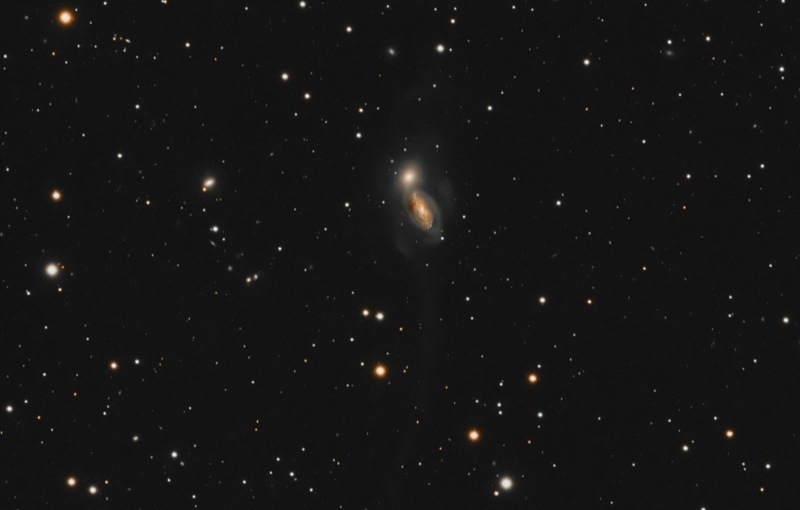
NGC 3226 is a E2 dwarf elliptical galaxy that is interacting with the Sab spiral galaxy NGC 3227. The two galaxies are one of several examples of a spiral with a dwarf elliptical companion that are listed in HaltonArp’s Atlas of Peculiar Galaxies. Both galaxies are identified as Arp 94.
For those unfamiliar with Halton Arp’s Atlas of Peculiar Galaxies, it is a catalog of 338 galaxies first published in 1966. The primary goal of the Atlas of Peculiar Galaxieswas to present photographic examples of the different kinds of peculiar structures found among nearby galaxies. At the time, the reason why galaxies formed into elliptical, lenticular, spiral, or barred spiral shapes was not well understood. Halton Arp perceived peculiar galaxies as small examples that astronomers could use to understand the physical processes that distort spiral or elliptical galaxies. With this atlas, astronomers had a sample of peculiar galaxies that they could study in more detail. The atlas was not meant to present a complete catalog of every peculiar galaxy in the sky but instead provides examples of the different phenomena as observed in nearby galaxies. The atlas provided the seed for astronomers to understand the physics of galaxy formation and today, the physical processes that lead to the peculiarities seen in the Arp atlas are well understood.
William Herschel discoveredboth NGC 3226 and 3227 and described the pair as a double nebula. NGC 3227 has since been identified as a Seyfert galaxy.
10”+ aperture telescopes can resolve NGC 3226 and NGC 3227 at a magnification of 100x. They are situated 50′ east of the well-known double star system Algieba. Again, as in last month’s article, a large aperture and moonless dark nights are needed to spot Arp 94. A mild sky glow may inhibit the observation of Arp 94, but a mild LPR filter may help. Don’t use a UHC, hydrogen-beta, or OIII filter as these will not filters are too severe in their filtering characteristics to help.